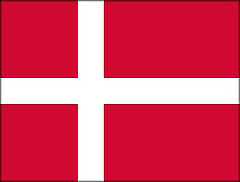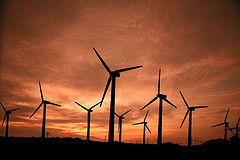 In honor of the upcoming climate change conference in Copenhagen, I have decided to write a bit about the highly-evolved Danish wind-generation network. Danes – it’s OK if you thank me later.
In honor of the upcoming climate change conference in Copenhagen, I have decided to write a bit about the highly-evolved Danish wind-generation network. Danes – it’s OK if you thank me later.
The Danes generate a higher percentage of their electricity from wind than any other nation. Currently, wind supplies 20% of electricity in Denmark. Spain comes in second, and generates 12% of electricity from wind1. The U.S. generates 1% of its electricity from wind.
So what’s the deal? Why do the Danes have such a large lead in wind? There are two main reasons:
- Denmark is a small, geographically homogenous country with substantial wind resources and very limited solar and hydroelectric resources.
- As the video below explains, the Danes have chosen to design an electricity system that favors wind generation.
Reason #1 isn’t too complicated… Denmark is small and flat. No location is further than 52 km (32 miles) from the coast .
Reason #2 is more complex. As the video explains, the Danish government subsidizes wind generation and allows wind turbines to connect to the grid for free. Additionally, the Danish Grid is connected to Europe, so Danish power companies have the ability to sell excess wind-generation during times of surplus into an expanded network.
 Also, although the video states that wind is cheap, Danish residents pay among the highest prices for electricity in the World. So now the question is, can other countries use the Danish experience with wind as a template for their own plans?
Also, although the video states that wind is cheap, Danish residents pay among the highest prices for electricity in the World. So now the question is, can other countries use the Danish experience with wind as a template for their own plans?
And the answer: Yes… and No. Countries can’t choose their natural resources, but they can choose to incentivize wind-farms as the Danes have. Of course, that choice can and will have a financial cost at-least in the short term, which a majority of a country’s citizens will need to decide to bear. Danes, we salute you.
1. Although Spain momentarily surpassed 50% last week due to high winds, and the integration of weather forecasting data into grid operations.
